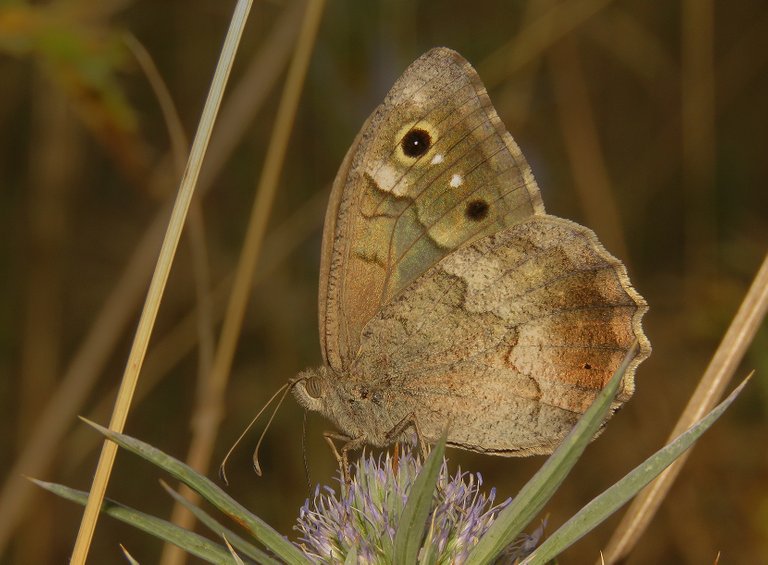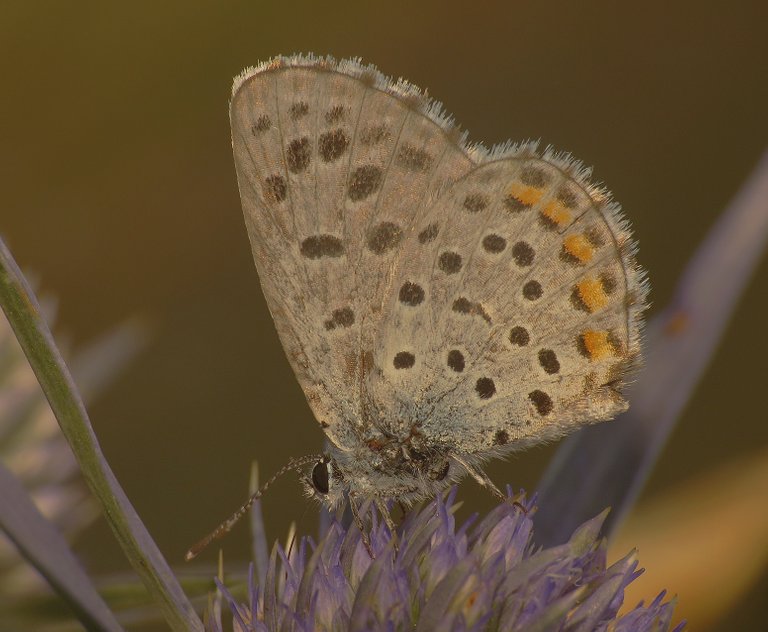On the 8th of August 2021, I spent a couple of hours on the meadows in the rural area around the small town that goes by the name of Zminj, about fifty kilometers north of my hometown by the sea.
The sun was strong, and the heat was exhausting, but not for the butterflies.
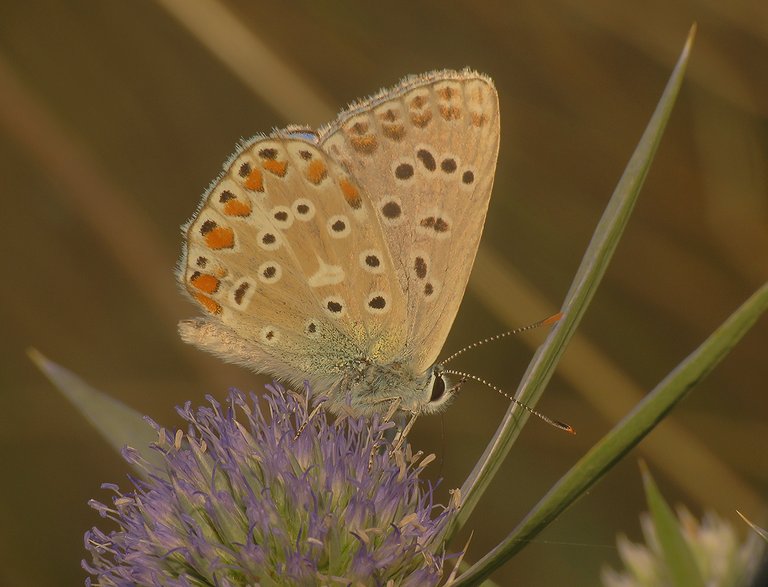
They were flying around and feeding on nectar. Here you can see the Polyommatus dorylas, a species from the Lycaenidae family. It was photographed on the Eryngium amethystinum flowers.
A very similar small butterfly soon landed on the same plant. This is the Pseudophilotes vicrama. The family is also Lycaenidae.
I wasn't there alone. The car was pretty crowded. Four friends were there with me ...
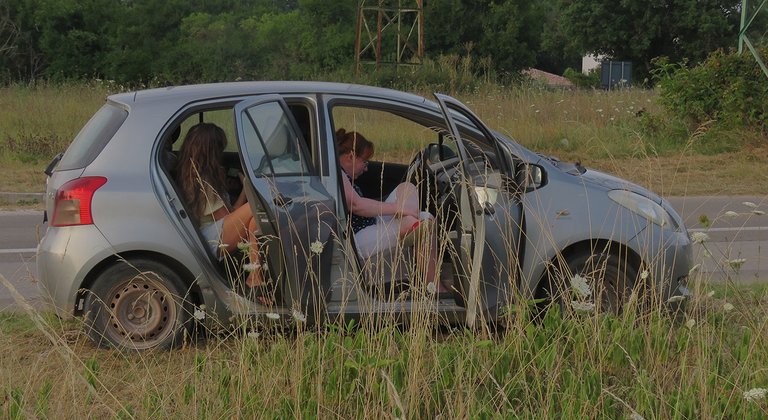
... but only two of them ended up in this post.
The other two were successfully avoiding the camera.
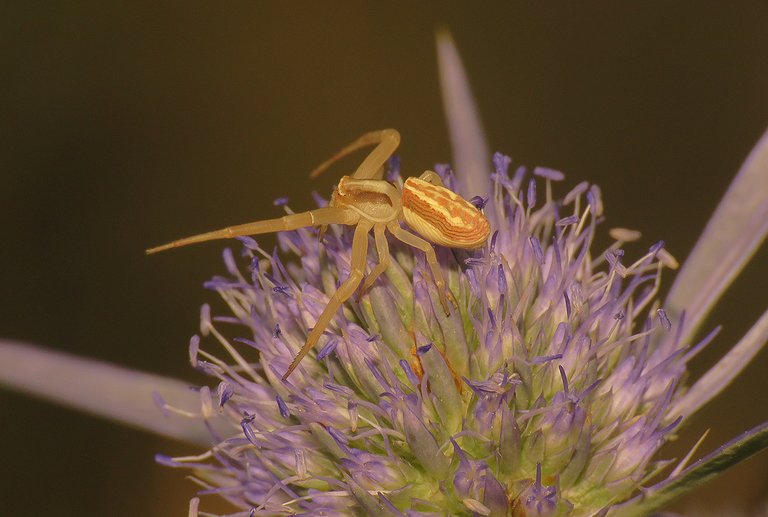
I spent almost half an hour around the thorny Eryngium amethystinum plants ...
... and I saw quite a few butterflies there. Many of them flew away before I was able to shoot them with my camera, but this beautiful Hipparchia statilinus was fortunately pretty quiet while feeding, so I took plenty of photographs.
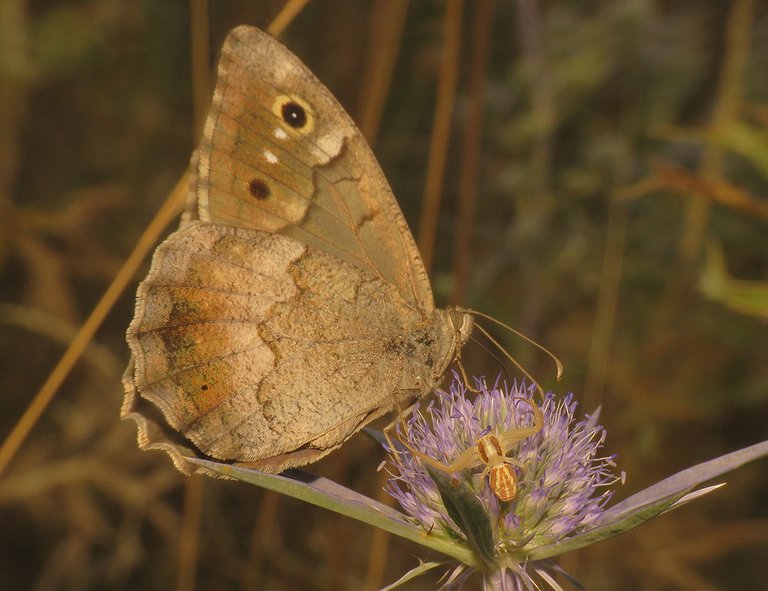
At one point the butterfly landed on the cluster of flowers with a crab spider waiting in ambush.
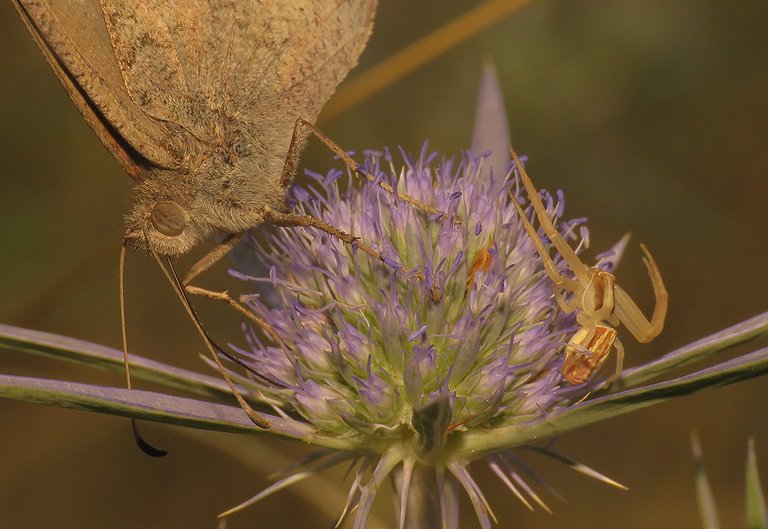
The butterfly looked too big to become prey of such a small spider, but you never know with crab spiders. I saw them catching butterflies that looked like giants compared to them. However, in this case, the butterfly flew away before anything dramatic could happen.
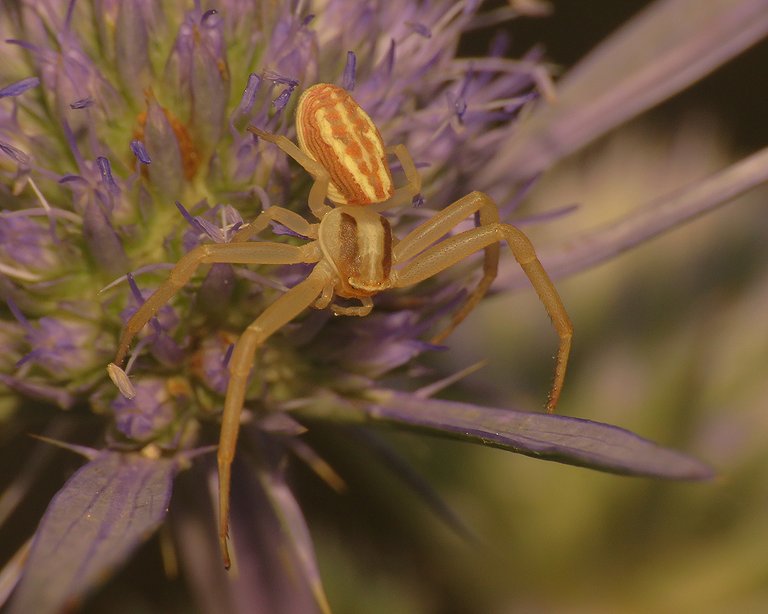
The spider in question was the Runcinia grammica.
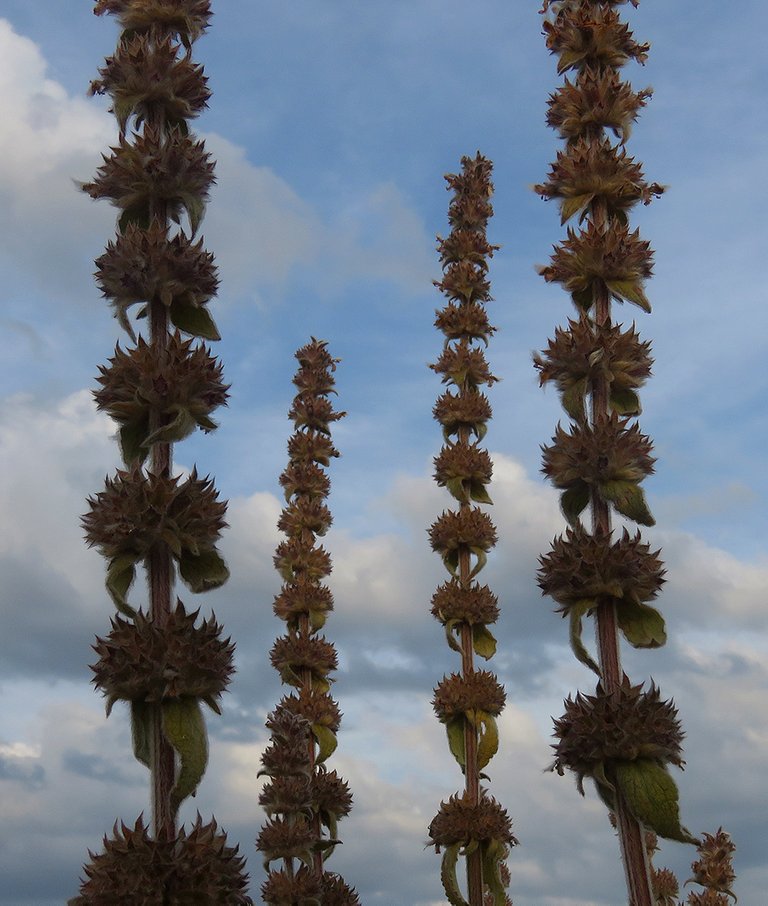
A bit later I came across this plant.
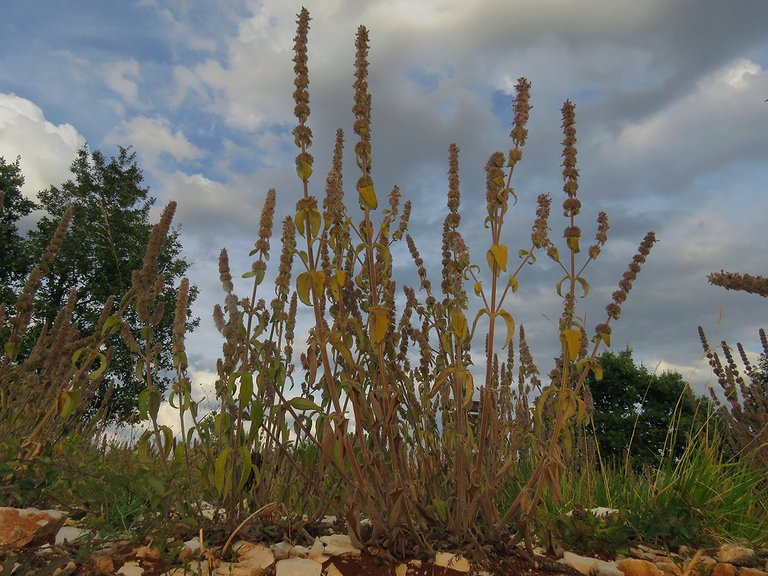
I'm not sure about the species. Could be the Stachys germanica. The identification would be much easier if the plant had fresh flowers on it.
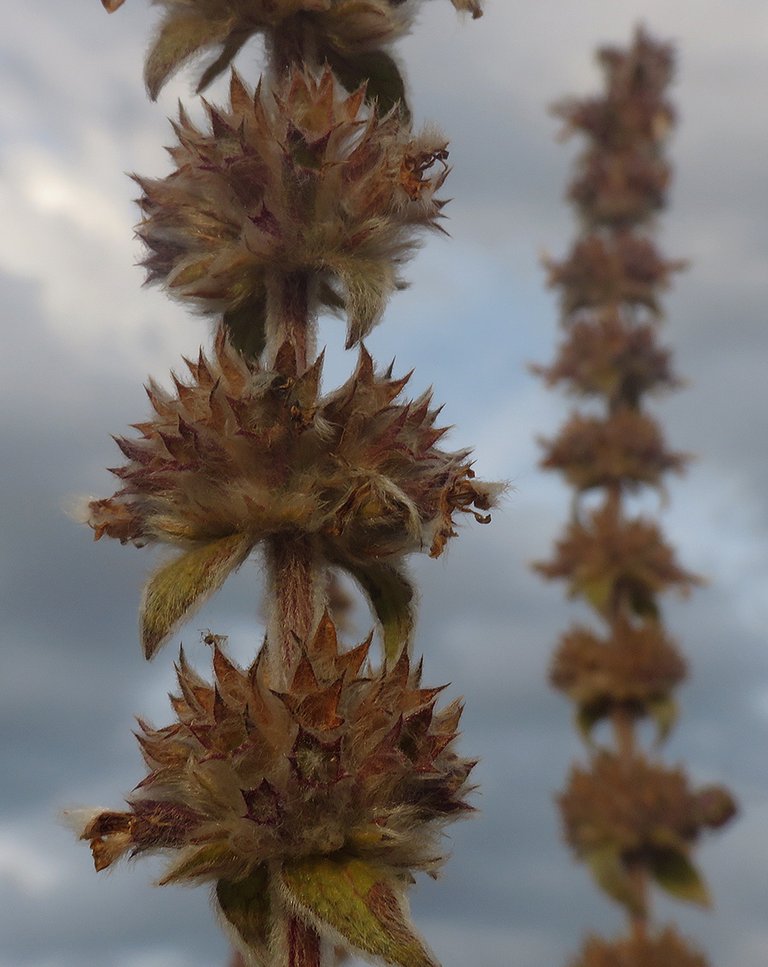
After a bit of sniffing around ...
... I noticed a well-camouflaged shield bug. The Codophila varia.
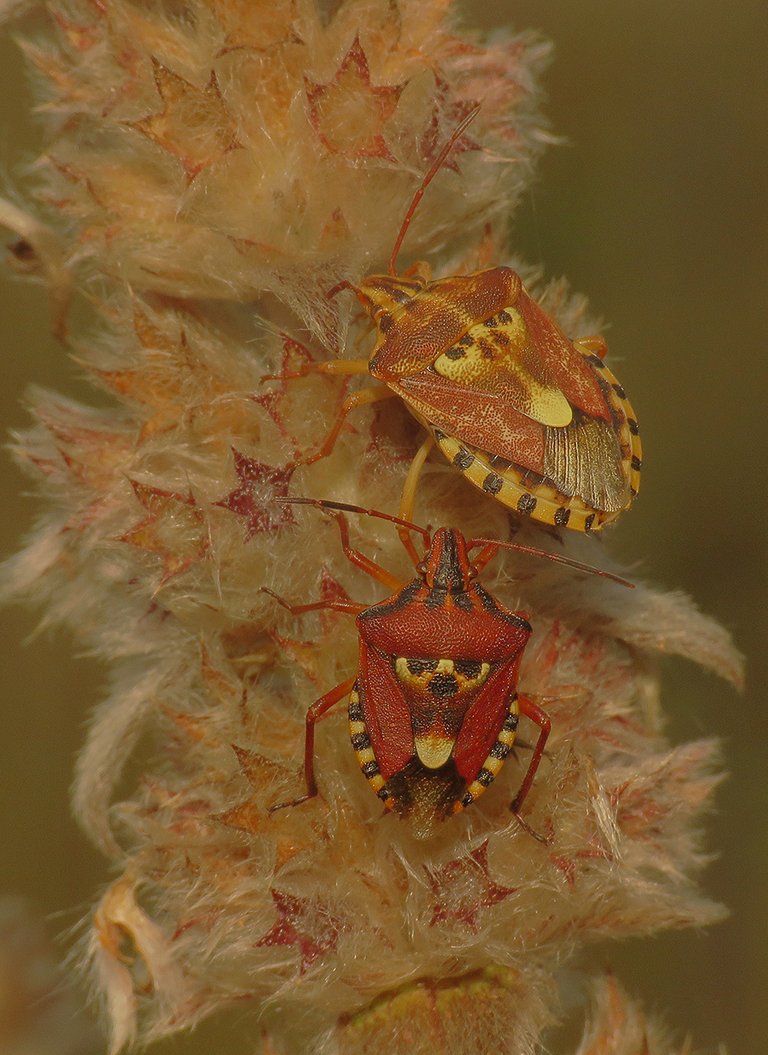
The colors in this species can vary from brown and yellow to vivid red.
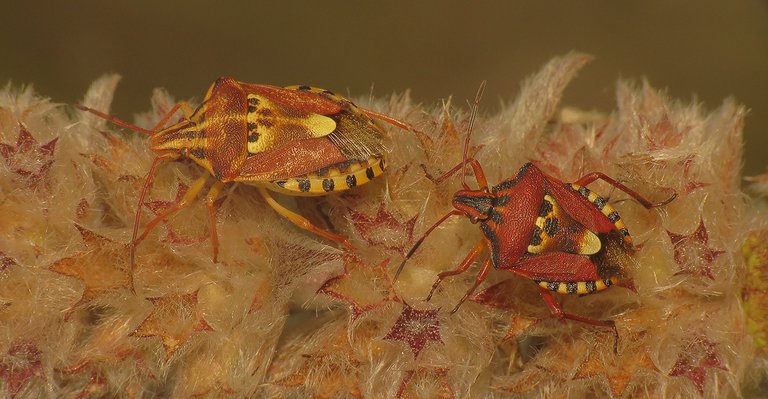
Here you can see two slightly different versions of the Codophila varia.
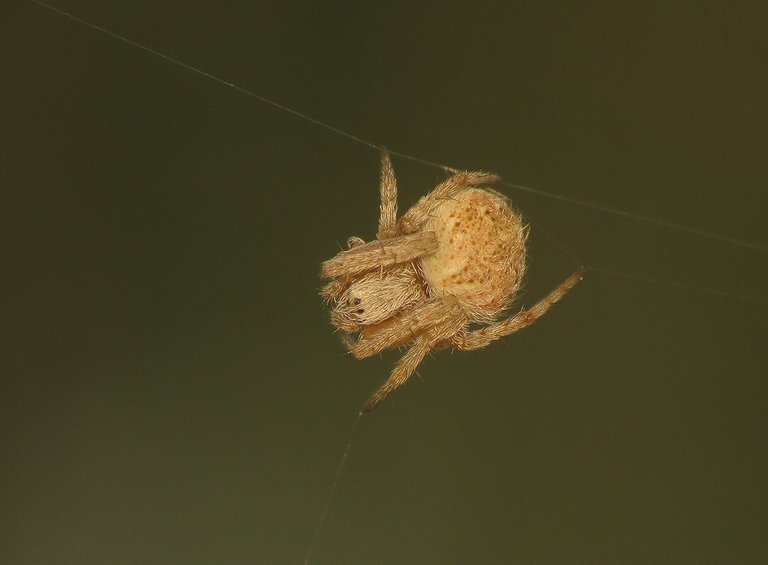
This small, juvenile spider was hanging from the lower leaves of the plant. Can't tell you the name of the species. The family is certainly Araneidae. Could be the Agalenatea redii. Maybe. Very, very maybe.
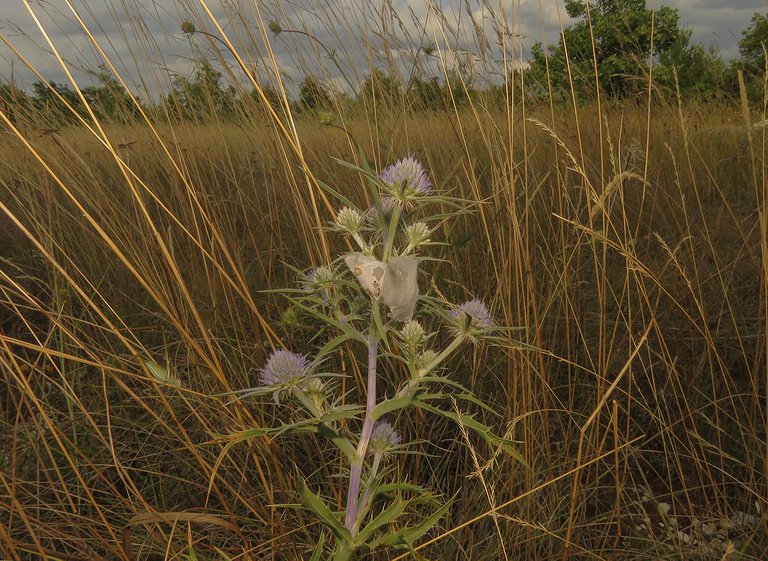
After some more walking around the meadow, quite aimlessly, zig-zag and in circles, I came across this Eryngium amethystinum plant with an interesting construction made of silky threads built in between its thorns.
The silky sack is the home of this pretty big spider with long fangs.
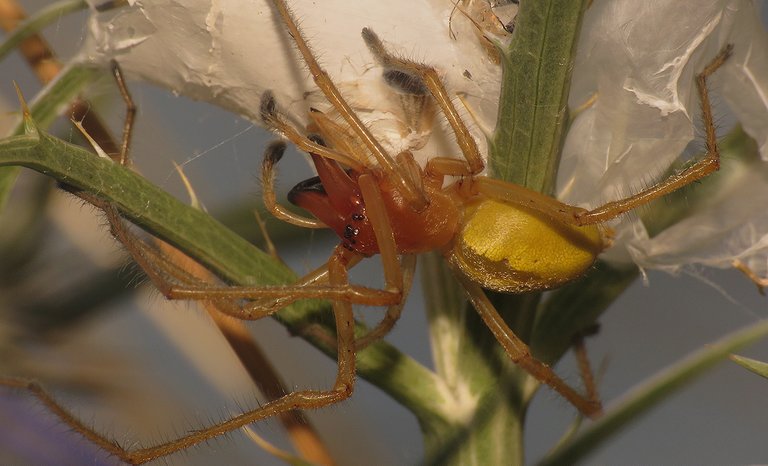
The Cheiracanthium punctorium. Commonly known as the Yellow sack spider. One of the few species in this area that can penetrate the human skin with their venomous bite. Fortunately, the spider isn't very venomous to humans. The bite is often compared to the wasp's sting.
The spider allowed me to take quite a few photographs before re-entering its shelter.
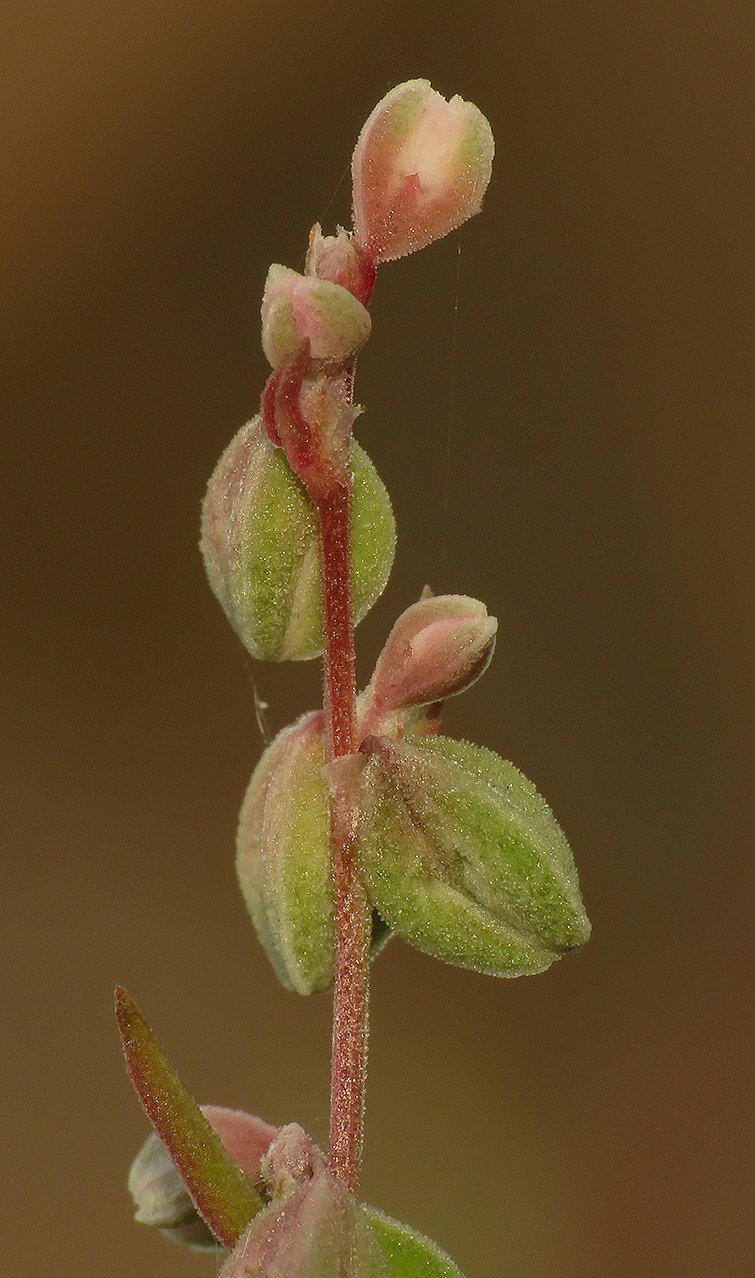
This shoot of the Fallopia convolvulus plant was photographed nearby.
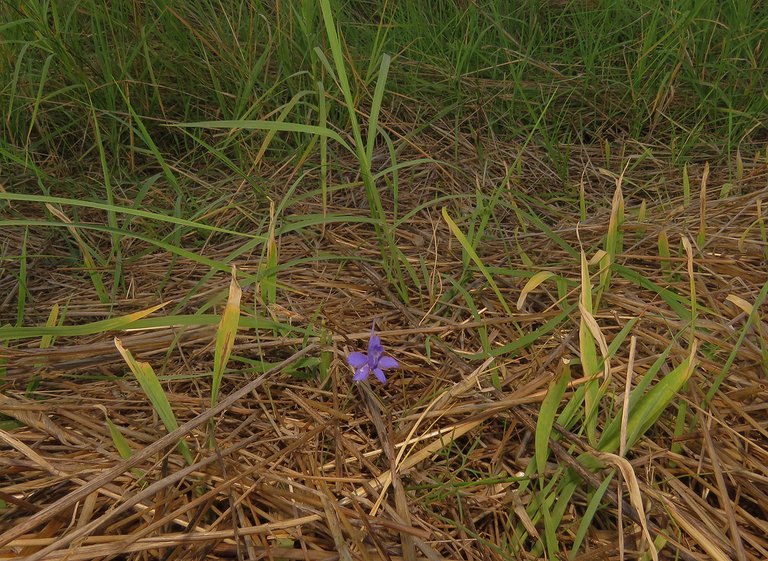
Twenty or thirty meters further, near the edge of the meadow, I noticed a blue flower in the grass.
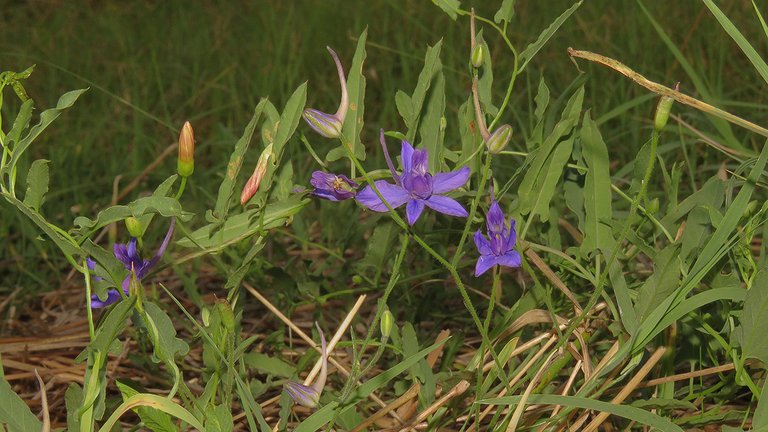
When I took a better look at the area, I found more of these flowers.
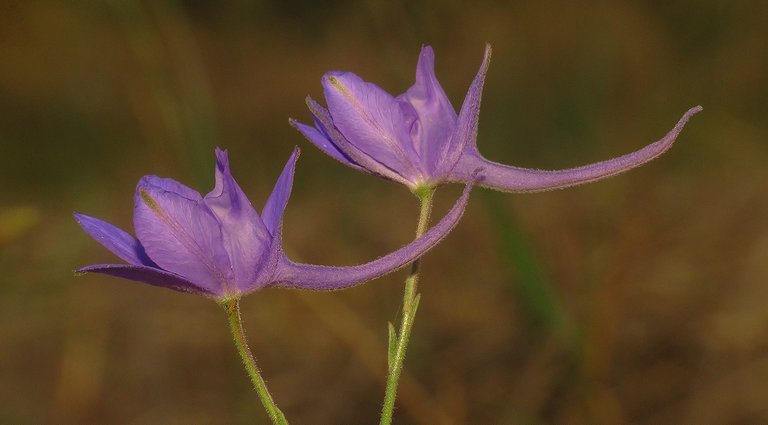
The color is very different when the flowers are lit with the flash of my camera ...
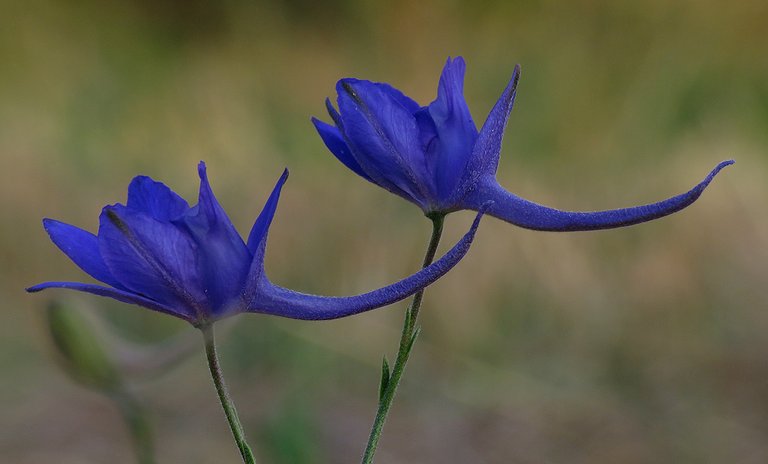
... so I took a couple of shots using only the ambient light in the shade of an oak tree ...
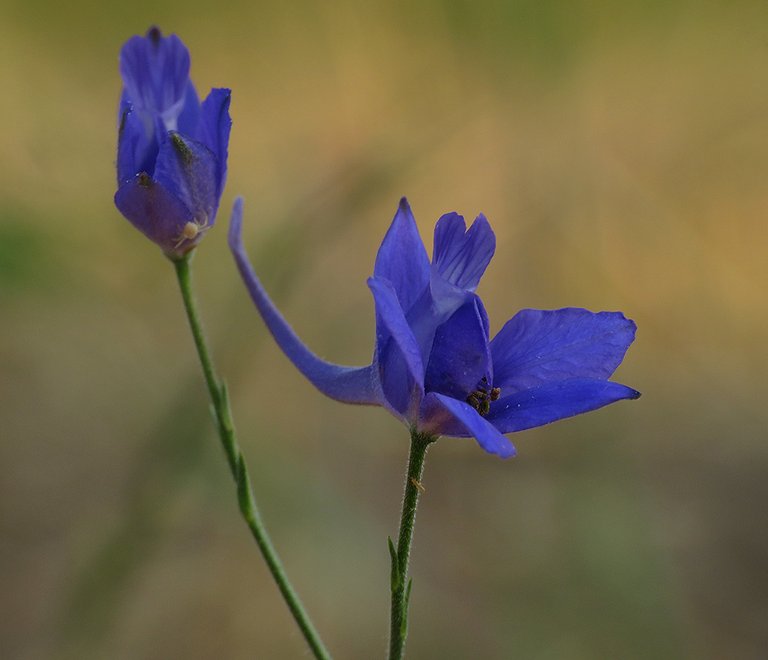
... where you can see how things really looked on that hot summer day in 2021.
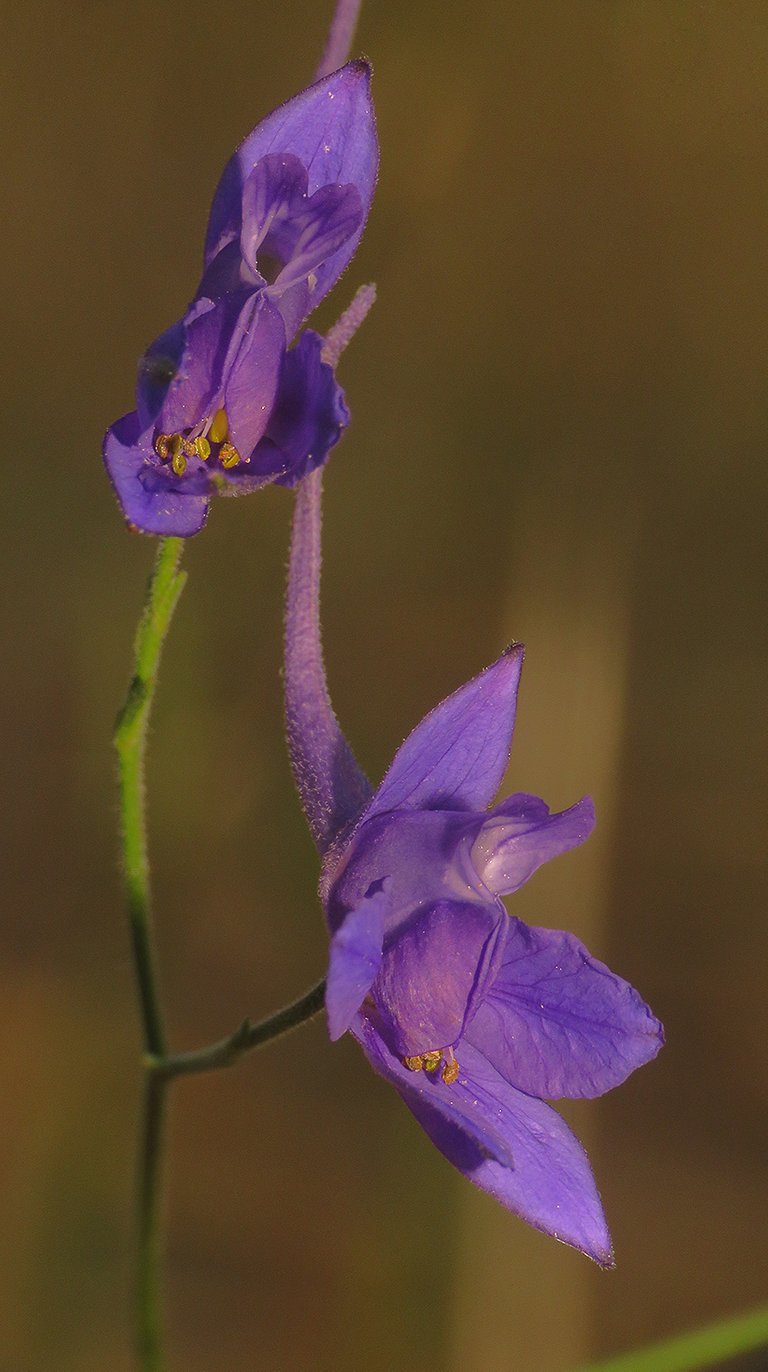
Only today, while preparing the post, I found out that these are the flowers of the Consolida regalis plant.
Before we all drove home, I passed again by the Eryngium amethystinum with the spider's sack on it.
The spider came out again, to see what was going on in his neighborhood.
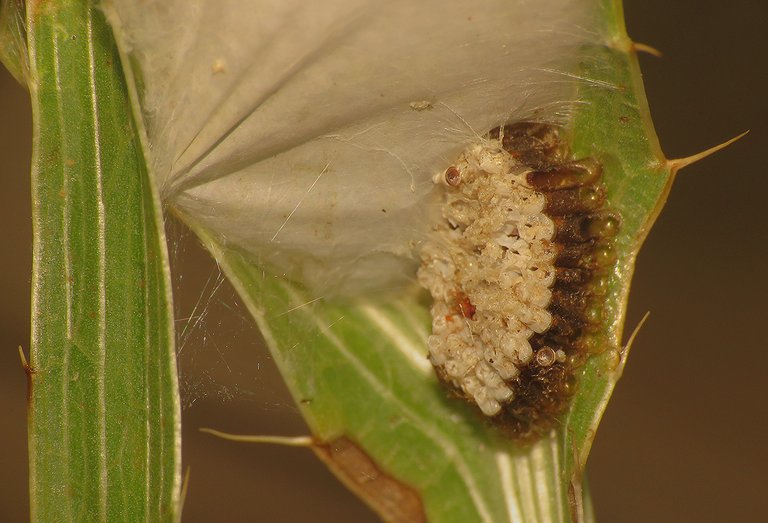
On another plant of the same house, closer to my parked car, I found another sack and a cluster of some hatched eggs near that sack. I don't know what creature produced those eggs.
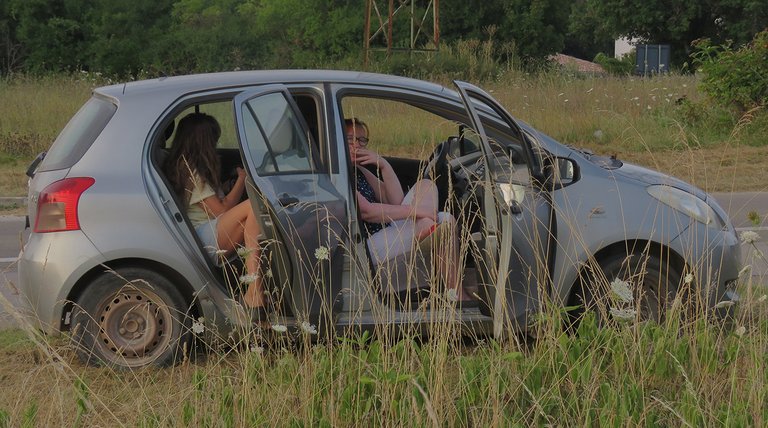
AND THAT'S IT. SOON WE RETURNED HOME SO THIS POST HAS TO END HERE. AS ALWAYS ON HIVE, THE PHOTOGRAPHS ARE MY WORK - THE END.
